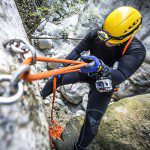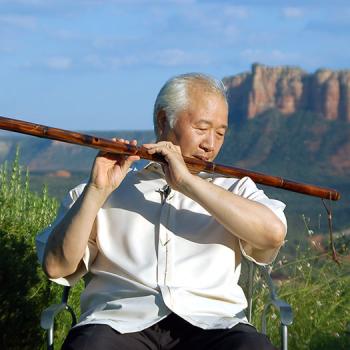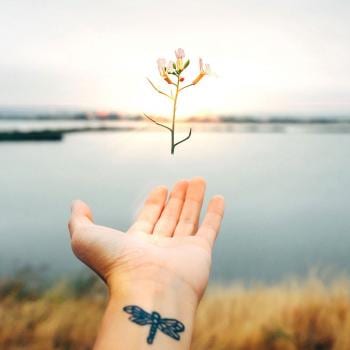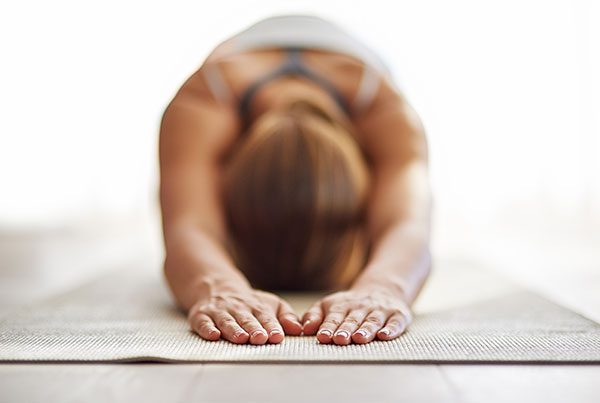
By now, you’ve probably heard a lot about the many benefits of meditation—reduced stress, increased focus, greater emotional control, and more. But how do you take advantage of these benefits if you find it hard to develop a regular meditation practice? The irony is that you need the increased focus that meditation brings, but you don’t have enough focus to start an effective practice! It’s no wonder that so many people start out with the intention of starting a daily practice only to discover that they can’t even get through a single session without their minds hopelessly wandering.
Of course, one solution is to become the pupil of a highly attentive meditation teacher. A good teacher will help you bring your mind back to center and will provide tips specific to your situation. The problem with that is that most people have neither the time nor the money to devote to this level of practice. At most, they can afford an occasional group workshop or one or two personalized sessions. What most people need is a simple, easy-to-follow practice that will work with their busy lifestyles.
Moving Body, Not Moving Mind
Because it is difficult to focus on traditional meditation, I recommend bowing, rather than sitting meditation, to my students. Bowing is indeed a form a meditation that centers and calms the mind, but it is far easier for busy minds to follow attentively. Psychologists have noted for a long time that unfocused minds can focus a bit better if the body is engaged in repetitive movement. That’s how a recent popular toy called “fidget spinners” was developed. Psychologists working with kids with attention deficit disorder noticed that if kids were given small objects to manipulate with their hands, they could focus better in class. The fidget spinner was a simple device that kids could spin while listening to instruction or while reading a book. As it turned out, lots of people, even adults, found relief through the little gadget, and millions of them were sold.
Energetically speaking, this works because the excess energies of the mind are released through the movement of the body. Instead of pooling in the mind, energy is pulled away toward the muscles. If you find that you tap your foot or strum your fingers when nervous, you are doing this unconsciously—burning off the excess energies of the mind through the movements of the body. Bowing accomplishes something similar as the excess energies of the mind are absorbed into the repetitive motions of the body.
The Eight Steps of Bowing
Below you will find a simple guide to bowing. More complete instructions with extra tips for successful practice are available in the book, Bowing: A Moving Meditation for Personal Transformation, and you can find personalized instruction at Body & Brain Yoga and Tai Chi centers.
At first, you might find the motions a bit awkward and laborious. This is normal as you are first learning the motions. With time, however, they will become much more natural and your movement from one position to the next will flow smoothly. At this point, when you no longer need to think about each position, the greatest benefit will be felt. Your mind will empty and energy will flow naturally through your body.
Step 1: Warm-up
Relax your mind and body through stretching, breathing, and relaxation exercises.
Step 2: Centering
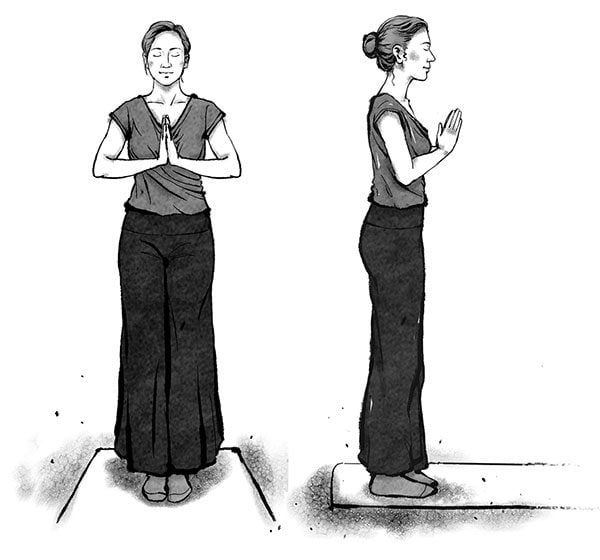
Keeping your energy centered in your lower abdomen, bring your hands to “prayer position” in front of your chest. Close your eyes and focus on receiving energy through the top of your head.
Step 3: Gathering Heaven
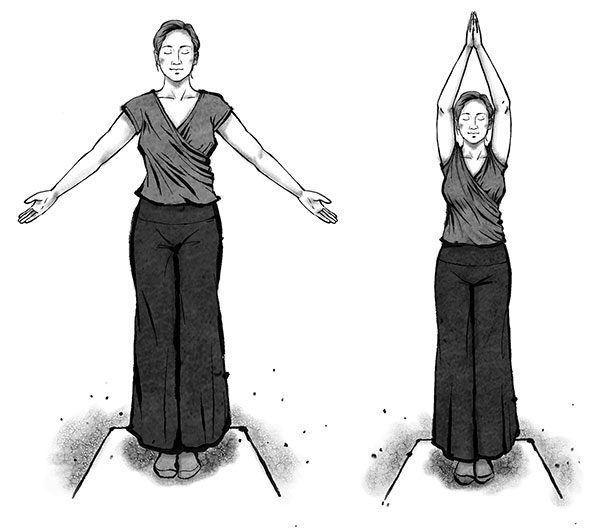
Bring your hands down and to the outside with palms facing upward. Bring your palms back together over your head and draw your hands down the center line of your body, returning them to the prayer position in front of your chest.
Step 4: Half-bow at Waist
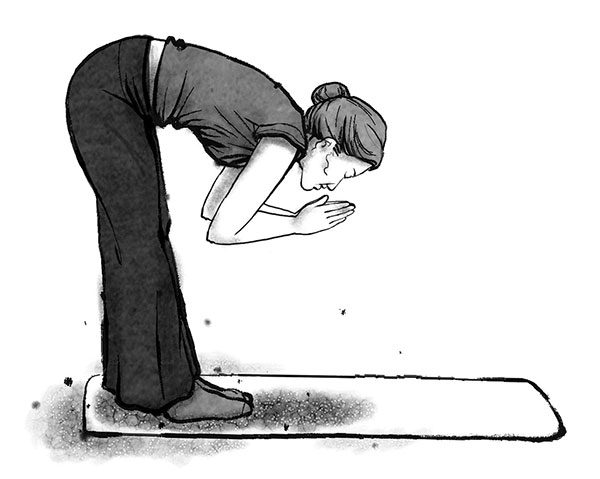
Bend forward at the waist, creating a 90-degree angle with your body.
Step 5: Lowering the Knees
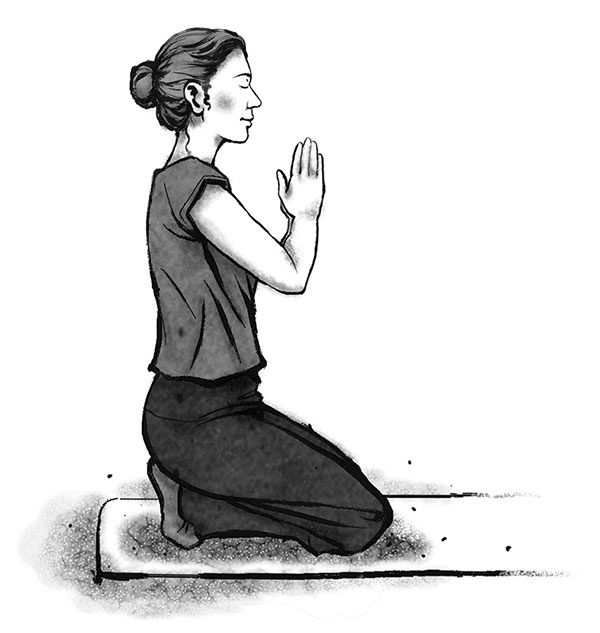
Bend your knees and lower your upper body toward the ground until you are kneeling with your toes on the ground. (Use your hands to steady yourself if you need to.)
Step 6: Forehead to the Earth
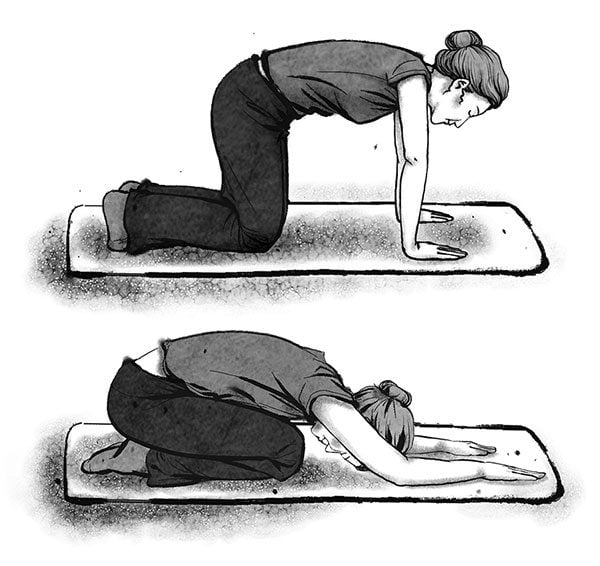
Bring your palms to the floor and lower your upper body down until your forehead touches the ground. Flatten the tops of your feet against the ground and lower the bottom half of your body all the way down as well.
Step 7: Heaven, Earth, and Human as One
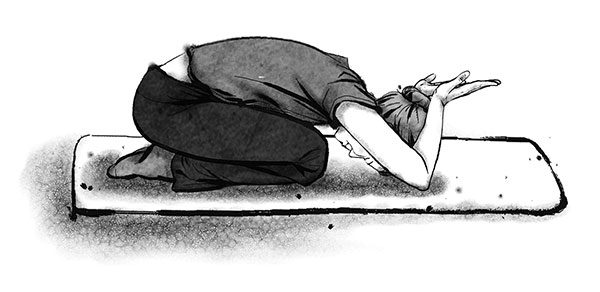
Turn your palms up and lift them toward heaven, focusing on the sensation in the center of your palms.
Step 8: Return
Lift your upper body and bring your hands back together. Curl your toes under your feet and lift your entire body back to the standing position. Repeat.
Added Benefits of Regular Practice
I recommend starting with a small number of bows, perhaps ten if you’re are in reasonably good health, and then slowly increasing the number until you reach one hundred per session. It’s a great way to start and/or end each day. If you can do this daily, you will experience benefits beyond those associated with meditation. The motion of the bow is specifically designed to open each joint of the body and to open the energy meridians. Bowing is the perfect antidote to today’s sedentary lifestyle, offering movement for the body, and calmness and balance for the mind.

